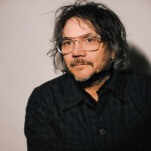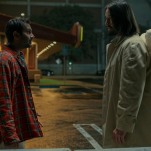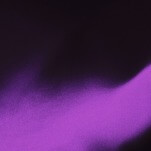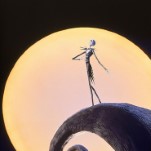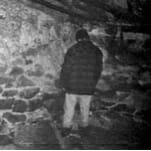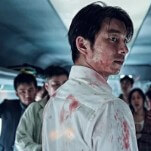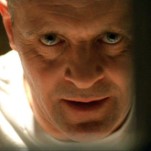No Album Left Behind: Way Down in the Rust Bucket Is an Essential Look at Neil Young & Crazy Horse’s Fearless Peak
This long-lost document may be the band's most important live offering of all
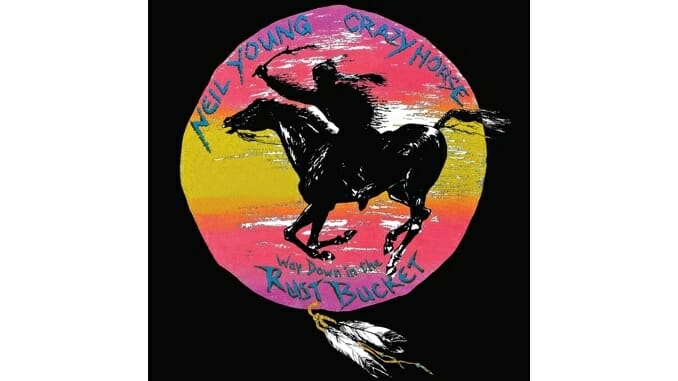
The hard truth is, no matter how many albums we review each year, there are always countless releases that end up overlooked. That’s why, this month, we’re bringing back our No Album Left Behind series, in which the Paste Music team has the chance to circle back to their favorite underrated records of 2021 and sing their praises.
Being a fan of Neil Young requires a considerably thick skin. Sure, the man blazed a trail of unfuckwithable classics after he shed the hippie deadweight of his partners in CSNY. But guessing where his muse was leading him time and time again made his more than 50 years as a solo act one of the most interesting careers in the history of pop music. Even a hard veer through the guardrails for ol’ Shaky can be more fruitful than one of his contemporary’s creative detours. But while records that contain Young’s name alone can indulge in his freaky side—look no further than his ’80s output for further evidence—his material with his longtime backing band and blunt rotation Crazy Horse tends to deliver a vibe that is unique to them alone.
Looking at the vast body of work Young put out with the guys in the Horse, it’s easy to pinpoint certain changes within the group. Instead of aging like a fine wine, the band only rusts like undisturbed auto parts in a junkyard. You can really look at the group’s evolution in sound with two monumental albums: their first, 1969’s Everybody Knows This is Nowhere, and 1990’s Ragged Glory. With eternal plug-in-and-play jams like “Cinnamon Girl,” the title track, and sprawling jams like “Down By The River” and “Cowgirl in the Sand,” the album drew a line in the concrete with spilt beer between how Neil’s records would sound with this band and the softer, more mass-appeal records he would later make on his own, like Harvest. The band’s releases became more ferocious in their attack up until the end of the ’70s with Rust Never Sleeps. But after a decade of hard-to-pin-down Young solo records mostly made without the core group of Crazy Horse, due to a well-documented feud with label czar David Geffen, Ragged Glory is the true awakening of the band we’ve known for the past 30 years.
Like how the official live release of Live Rust found Young and his bowling team (I’m just going to keep assuming they do things like that together) during their Rust Never Sleeps era, the 1991 live album Weld catches these mischievous elder statesman taking a glorious victory lap at the dawning of the grunge era they helped inspire. In fact, on that tour, they had enlisted a pretty great group of Crazy Horse disciples to help remind the younger generation of their forefather status, with Sonic Youth and Social Distortion taking opening slots in arenas on their trek across the States. While Weld is a thrilling and energetic listen, the loose Way Down In The Rust Bucket may be the definitive representation of Crazy Horse during this period.
Recorded at a warm-up gig for the Ragged Glory tour at the 800-capacity venue The Catalyst in Santa Cruz, California, this set pulled from the endlessly rewarding Neil Young Archives finds Young and the boys in a more playful mood, eager to fuck around without the pressure of delivering for the live documentation of their tour-tight future selves at the end of this run of shows. Much like the vibe on Ragged Glory, they didn’t seem to be out for blood at this show like some of the material on Weld, but rather aiming to deliver a relaxed marathon set of classics with a stoned-out, shit-eating smirk.
The set begins with a nine-minute-plus version of the Glory opener “Country Home,” and you can hear the culmination of years Young spent perfecting his one-of-a-kind guitar tone. Nearly all of the cuts from that album are represented in the 19-song set, and many of them receive a similar mid-tempo treatment—sometimes stretching out to around the 10-minute mark, like on the transcendent run through “Love to Burn”—allowing notes to ring out until they decay into blissful banshee squeals coming through Young’s vintage fleet of tube amps. This is the golden era of the “Neil Tone.” The scummy fuzz was behind the riffs and tremolo solos back in the ’70s, but the early ’90s is when it was no longer bound to a reality mere mortals could comprehend. Young creates guttural chugs and notes that feed back with both dissonance and musicality, like a spirit in limbo leaving and returning to a corpse between the jolts of defibrillator paddles.
-

-

-

-

-

-

-

-

-

-

-

-

-

-

-

-

-

-

-

-

-

-

-

-

-

-

-

-

-

-

-

-

-

-

-

-

-

-

-

-










